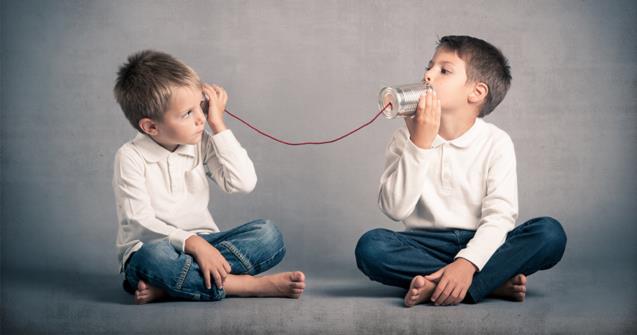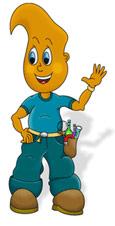
Globule wonders...
How do we remember things?
Experiment: Sound Memory
Hypotheses: Ask children if they know how their memory works. How do they recognize sounds without seeing whatever is producing it (ex. The neighbor' s dog barking)?
Material:
- A computer
- PowerPoint (usually included with Microsoft Office)
Manipulation:
- The daycare worker must place the computer so the entire group can hear the sounds but not see the images.
- Before beginning, make sure the volume is set reasonably high so everyone can hear.
- Open the PowerPoint document "Sound Memory".
- In the menu bar at the top of the screen, click on Slide Show, then View Slide Show. The document will appear in full screen. Press the space bar to begin or to go to the next page.
- You will see two screens of 25 images each. Each image is accompanied by a small icon representing a speaker. Click on the speakers to hear the sounds.
- Children try to identify the sounds they hear.
Explanation: Let's try to explain what happens in your brain when you try to identify a sound you have heard before. Begin by imagining that your brain is a large forest. Each sound you have heard in the past is hiding in a particular place in the forest. When you hear a particular sound, you must follow a specific path in this forest to find the memory you have stored and recognize it. You will follow the path of sounds you hear often most. That is why it is easier for you to recognize the origin of those sounds. If you not hear a sound often, the branches and bushes will grow on the path that leads to this sound and it will be more difficult to identify. If you have never heard a sound before, it will be impossible to find it in your forest. It is not yet hiding in it. You must find a place for it and find the path leading back to it next time you hear it.
This principle applies to much more than sounds. It applies to everything we store in our memories. Things we see often, do often, eat often, etc. will always be easier to find in our memories.
There is an exception to this rule. If a memory particularly impressed you, even if it was a very long time ago, it will probably remain in your memory for a very long time. For these special memories, it is as if their paths are paved so no vegetation can block them. They are always easy to access!
Angélique Boissonneault
has a Bachelor's Degree in Biological Science. She has worked in a laboratory and tested her knowledge. She has taught Math, Chemistry, and Physics. She has also developed a simplistic and innovative approach designed to introduce young children to scientific experiments, old and new. She created her friend Globule. This character is sometimes red, and sometimes white. He guides little ones through their scientific experiments and discoveries. It is clear to see Angélique is passionate about children and science. Globule's Approach.

 Home
Home Theme activities
Theme activities
 Babies and toddlers
Babies and toddlers
 Arts and crafts
Arts and crafts
 Science
Science
 Creative recipes
Creative recipes
 Tips and tricks
Tips and tricks
 Special needs
Special needs
 Extra activities
Extra activities
 Educ-TV
Educ-TV
 Newsletter
Newsletter  Online store
Online store Educatall club
Educatall club

